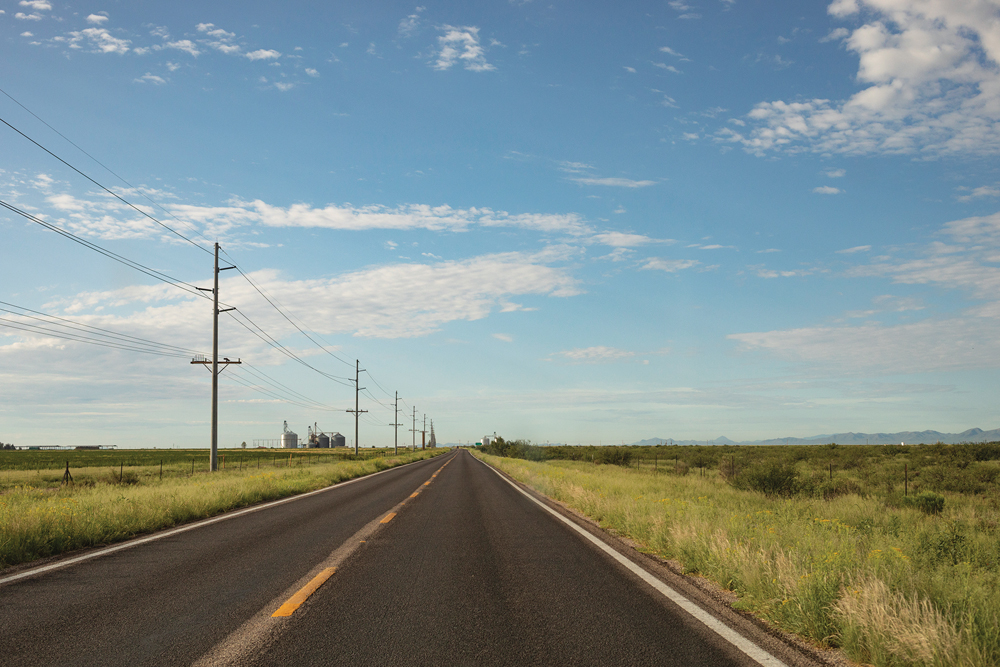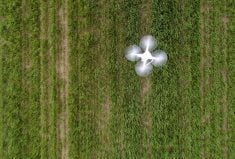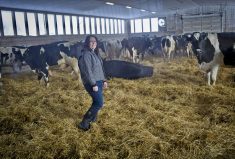Manitoba Hydro says in the last few years it’s seen a sharp rise in collisions between farm equipment and power infrastructure.
“The outcome for these contacts can be tragic and severe,” said Cyril Patterson, Manitoba Hydro’s director for distribution, operations and maintenance for rural Manitoba.
He and other Manitoba Hydro staff spoke during the Keystone Agricultural Producers’ spring advisory council meeting on April 15.
Manitoba Hydro saw 120 contacts between farm equipment and its infrastructures, and over 180 contacts in 2019. Around 70 contacts were with high-voltage lines in 2019, and just over 100 contacts were with high-voltage lines in 2020.
Read Also

Journal pulls long-cited glyphosate study for ethics violations
The journal Regulatory Toxicology and Pharmacology has retracted a 2000 Monsanto-linked glyphosate review, drawing new scrutiny as Bayer faces mounting legal pressure.
There were 109 per cent more incidents of contact with overhead lines in 2020 than in 2019.
The incidents were spread across agro-Manitoba, said Tim Yaremchuk, operations department manager for Parkland-West.
Based on damage reports, causes for this increase may be larger equipment, new farm machinery operators, lack of situational awareness, distracted driving and the increased use of autosteer.
How and where these accidents happen may not be what producers expect.
Damage prevention co-ordinator Rob Morrison shared survey data collected this spring in agro-Manitoba. Manitoba Hydro asked surveillants where they thought most accidents happened, when they thought they happened, and which equipment is usually involved.
Producers said most accidents happened on the farmyard or field approaches. Hydro’s incident reports said the most implement damage occurred in the field, followed by on the roadway.
Producers perceived augers and cultivators as most likely to be involved in accidents, followed by seeders. Hydro data showed that augers were very unlikely to be involved in contacts with power lines and poles.
“Everyone still recognizes that risk, and you’re doing such a good job recognizing that risk that we’re not seeing the damages,” said Morrison. “That to me is encouraging.”
In 2019 and 2020, cultivators were involved in the most incidents, followed by seeders, Hydro data showed. There were also a significant number of incidents where Hydro did not know what had caused the damage.
Producers perceived correctly that incidents were most likely to happen in seeding and harvest times.
KAP members asked the Hydro employees if Manitoba Hydro plans to raise its minimum line heights.
Patterson told producers Hydro has a minimum line height of 17 feet and replaces poles to that specification as they age out, but poles erected in the 40s and 50s are still standing. Lines are built higher than 17 feet so they’ll meet the minimum if ice or other conditions cause it to sag.
“When you consider the height of some of the equipment it may not seem like a lot,” Patterson said.
“I don’t know that I have very much equipment that falls under 17 feet, so when does this start to change?” asked Mitch Janssens.
“Even though they may meet current standards… we know as we all know that equipment is getting larger and it sometimes is becoming more difficult, not only on the roadways but on our accesses to our fields,” said Shannon Pyziak.
“I don’t know what the response should be, but sometimes we don’t know until the day of or perhaps the day before that we’re going to be going into a field,” she added.
Pyziak said it can be difficult to get Manitoba Hydro’s help in a timely fashion if they need to get under a line and onto a field.
“That came to us loud and clear as part of the survey, so we are rededicating and refocusing our efforts around awareness of and education of that permitting process,” said Gary Shingleton, corporate communications co-ordinator for Manitoba Hydro.
Manitoba Hydro has a farm equipment move permit program, and it will help the producer plot the safest route from farm to field Shingleton said. He suggested producers apply for that permit earlier and Manitoba Hydro may be able to work out a plan in advance.
















